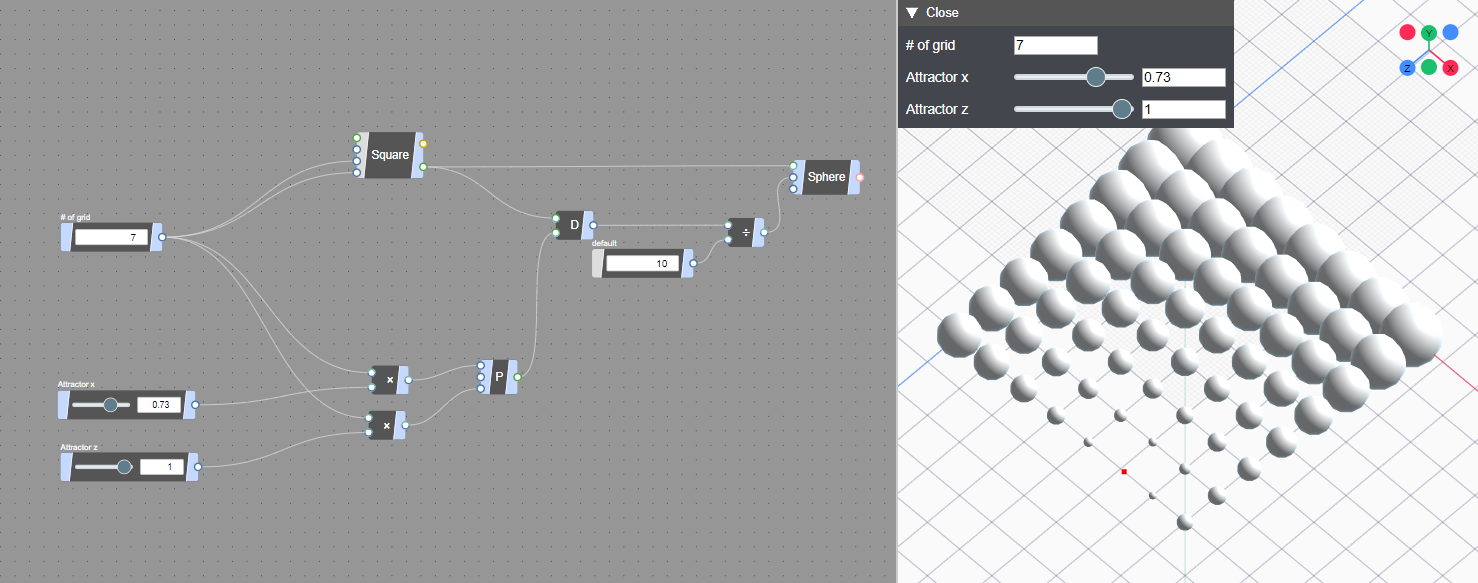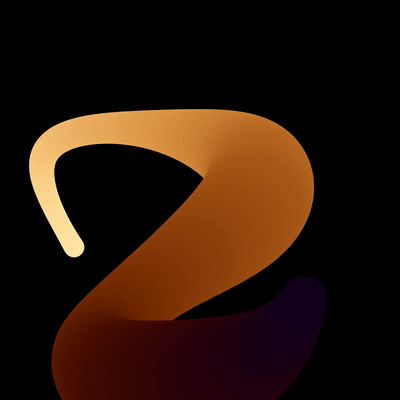Originally posted on Substack
“A blank canvas…has unlimited possibilities.” - Stephanie Perkins

Good Evening Folks or Happy Friday!
I’ve been working on multiple small projects and this above was supposed to be a simple infographic of the most popular frameworks. However it has become an all weekend event on Twitter which was a great community effort. Being that there has been so much interest, I though this will be a great opportunity to move the wireframe version above into an interactive graph which I do look forward to finishing.
Generative Artist Timeline
I’ve started to add artists from the last 120 years or so into a spreadsheet as a first attempt to some of the timeline work I had referred a few months ago. Right now, being that generative art is rather new, I’ve found it a bit harder to find dates on artists than I personally thought.
Important Generative Art Events
Another project that I have started and continue to work on is putting together an important events timeline in order to better understand the current history of generative art in all of its forms. I think there are disparate communities that could fall under the umbrella of generative art.
Defining it as generative or not, can be something done by later historians; however I find that it is important to ensure we understand the many experiments in various domains of multimedia, graphic, computer scientists, mathematicians and the fine arts that will help unify a historical thread that could help build a more complete thread of the past and help guide into the future to help rediscovery of the pass help light the way of the future.
At this point it is a bit of a braindump. I have a number of notes in various places I have yet to collect but this at least provides next steps to help understand the future.
🖌️ Unconventional Media
📸 Generative Graphic

Nodi3D Walkthrough
Nodi (public β version) is a online node-based geometry design tool and social development environment. Node-based programming like Grasshopper and Dynamo can be executed in the browser, and node graphs and models can be easily shared.
🚤 Exhibitions
onCyber.io Gallery: The Vincent Van Dough Gallery
I am in awe of the following gallery by Vincent Van Dough. Much of it is generative though not all of it.

This scene right as you walk into the main exhibit… Tyler Hobbs’ Fidenza #553 and Dimitri Cherniak’s Ringers #337 and #80 are breathtaking (especially in VR). I’d imagine it has a similar effect like walking into one of the ancient temples of Greece at the height of their glory.
Do check it out, its worth taking a look and doing some discovery of the pieces. And to be honest Vincent Van Dough did a slammer job pairing his pieces.
🔖 Articles and Tutorials
Artblocks.io Interview with Joshua Davis
{{ youtube 3rKBhkjnfAE }}
I remember back in early 2000s when coming across the work of Joshua Davis. As a teenager, I was really really excited to have gotten a copy of Flash MX for my birthday. ( I still have a printed birthday card with Flash MX being on the box somewhere that my family had made.) It was the time where I first got to know about Joshua’s work and then many others through sites such as Kirupa.com. One swf that really surprised me was a 3D box in the flash file that would capture the mouse and hold it. You’d have to wiggle the mouse free from the box. I found that mind blowing at the time.

Eigenvector Visualization and art
Existing interfaces between mathematics and art, and geography and art, began overlapping in recent years. This newer overarching intersection partly is attributable to the scientific visualization of the concept of an eigenvector from the subdiscipline of matrix algebra. Spectral geometry and signal processing expanded this overlap. Today, novel applications of the statistical Moran eigenvector spatial filtering (MESF) methodology to paintings accentuates and exploits spatial autocorrelation as a fundamental element of art, further expanding this overlap. This paper studies MESF visualizations by compositing identified relevant spatial autocorrelation components, examining a particular Van Gogh painting for the first time, and more intensely re-examining several paintings already evaluated with MESF techniques. Findings include: painting replications solely based upon their spatial autocorrelation components as captured and visualized by certain eigenvectors are visibly indistinguishable from their original counterparts; and, spatial autocorrelation supplies measurements allowing a differentiation of paintings, a potentially valuable discovery for art history.
Animating Mathematica surfaces: Wolfram and Blender integration
In this series of animations the starting point was a surface or several curves mostly in parametric form. A first step was finding the surface/curves via natural language input or entering their definition from an external source. Then a 3D-visualization was created. If it peeked my interest the curves/surface were/was exported as objects or their parametric form converted to Python. After a transfer into Blender the aim was to create animations, that spoke for themselves.

Creative coding with circles
By varying the size and the position of the circle, then drawing it as it moves, taking care not to erase its path, the outcome is something that resembles pulled candy. The animation at the beginning of the article was created using this technique.

Why Is Schoenberg’s Music So Difficult To Understand?
To answer this question we might be inclined to trace the ideas behind Schoenberg’s works, or to explore the intellect that resides in them, or, as is often done, to approach the music through philosophical, literary, or other such avenues

NFT Timelines
This website is focused on NFTs (Non Funglible Tokens) evolution and first uses of NFTs in relation to Art and Music. So I’m not going to mentioning crypto art pioneers like @cryptograffiti, @coin_artist and others unless linked to novel or first time NFT use. The information is evolving and there maybe mistakes.

Computers and Automation
Published by Edmund C. Berkeley since 1950. Computers and Automation was the first computer magazine. It was originally called Roster of Organizations in the Field of Automatic Computing Machinery, and later The Computing Machinery Field.
The following archive of the Computers and Automation magazine is a treasure trove that I have yet to really dig into to really get some more understanding in the history. However in the August 1972 edition, there was a yearly computer art competition. Above you will find a piece done by Manfred Mohr that some of you might find interesting.
🎒Courses
I’ve highlighted these before, but since I have Joshua Davis above, I thought I might put it in here again!

Programming Graphics II
My first skillshare class “Programming Graphics I: Introduction to Generative Art” is a REQUIRED prerequisite to taking this course. I taught students how to create an infinite number of patterns using my HYPE Framework library and very simple commands. In this next class, we’ll be taking static compositions (like those created in the initial class) and animating them by using a similar set of rule based randomization. In other words, we will be bringing your artwork to LIFE!
It’s not free, however it is well work taking the trial of Skillshare and watching it! You can get a month for free when using the following link!
📚Books

When the Machine Made Art
Considering how culturally indispensable digital technology is today, it is ironic that computer-generated art was attacked when it burst onto the scene in the early 1960s. In fact, no other twentieth-century art form has elicited such a negative and hostile response. When the Machine Made Art examines the cultural and critical response to computer art, or what we refer to today as digital art. Tracing the heated debates between art and science, the societal anxiety over nascent computer technology, and the myths and philosophies surrounding digital computation, Taylor is able to identify the destabilizing forces that shape and eventually fragment the computer art movement.